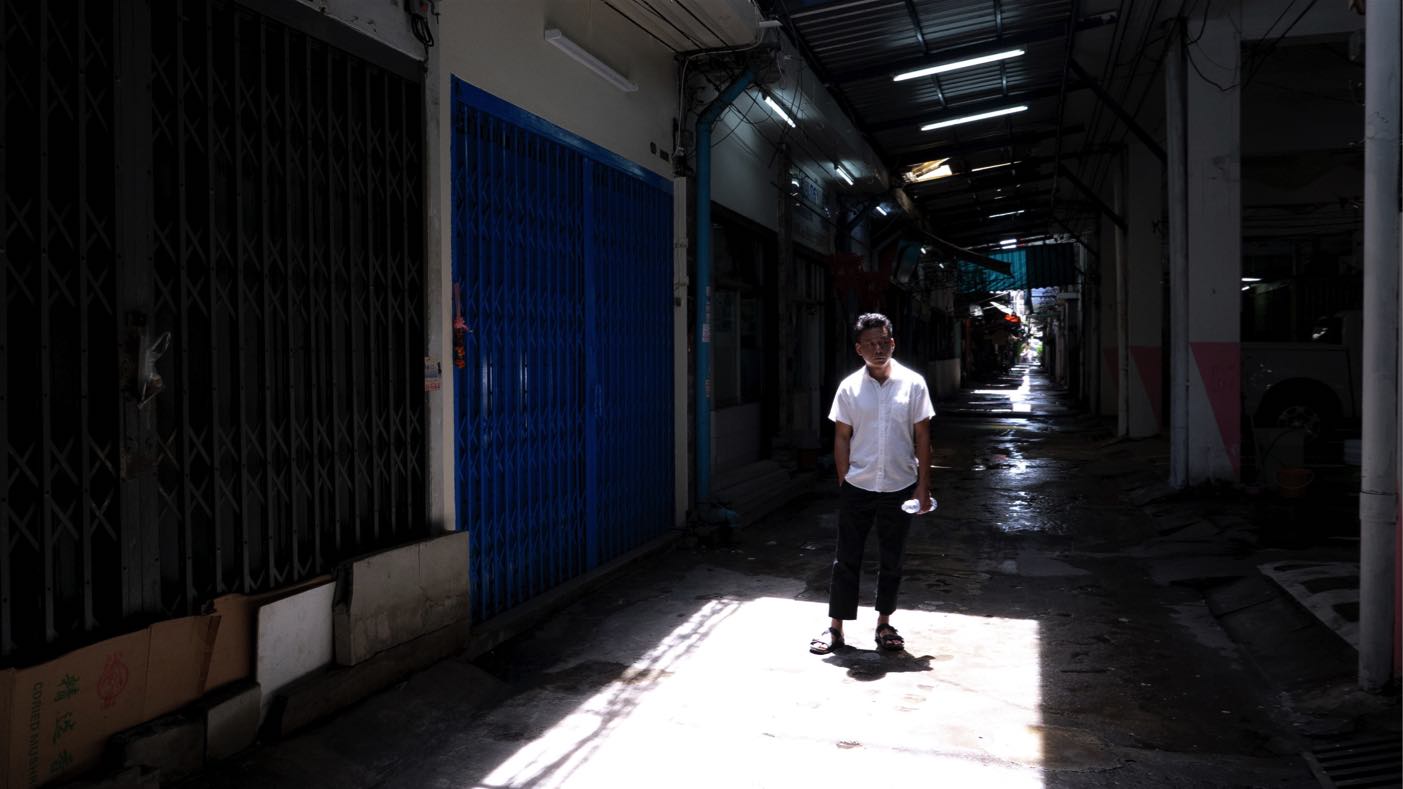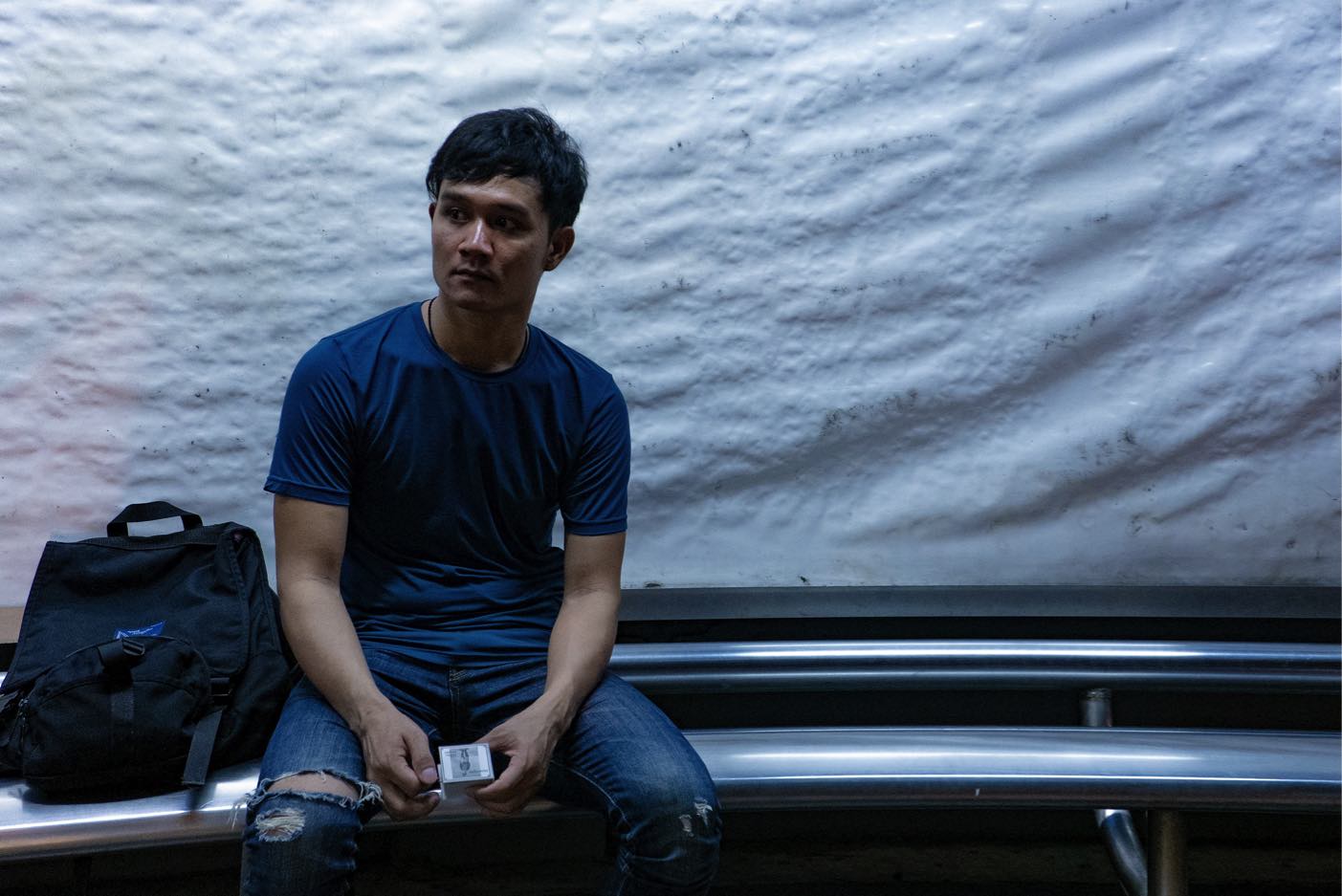
Tsai Ming-liang, veteran director of the Taiwanese Second New Wave, often saturates his films with images of death and ruins. His latest film Days elevates this approach to a more personal level. In previous films, Tsai incorporated these themes in quite deliberate fashion. What Time is it There? shows Tsai’s long-time collaborator and muse Lee Kang-sheng depressed over the death of his father; Goodbye, Dragon Inn concerns a movie theater screening its last film before it closes down forever; the ending of Stray Dogs places Lee Kang-sheng in front of a mural cast in the wall of an abandoned building. In Days and other later works, Tsai’s interest in mortality and the moribund feels more immediate—likely due to his own advancing years, and to various health problems that he and Lee have suffered. When asked about making more films with Lee, Tsai’s remarks are light, but morbid: “Of course I don’t have that much time left anymore. In less than 10 years I’ll turn 70.”
From Rags to Riches
Even by name, Lee Kang-sheng has grown older. Tsai usually names him “Hsiao-Kang”, but in Days he has dropped the “Hsiao” (which translates to “little”) so now Lee Kang-sheng is simply “Kang.”
In previous films, Tsai places Lee on the outskirts of society, where he portrays downtrodden characters for whom life presents a constant struggle. He hustles watches on the streets in What Time is it There?, performs in adult films in The Wayward Cloud, and drifts around drunk and homeless in Stray Dogs.
By contrast, Kang lives a rather pleasant life in Days, occupying a spacious countryside house surrounded by majestic landscapes. Kang also suffers from neck pains, a real-world injury which Tsai incorporated into the Lee Kang-Sheng “cinematic universe” in 1997’s The River . Thus, Kang visits the city for an intricate acupuncture session to help soothe his pain. It is clear that this iteration of Lee Kang-Sheng has acquired some wealth and lives minimally, though with relative leisure and comfort.
Meanwhile Anong (Anong Houngheuangsy), the other character in Days, lives in a more run-down apartment in the city. He is younger than Kang and also maintains a spartan existence. We watch him pray at the altar, return to his apartment to prepare a simple dish of fish and vegetables, and sleep on a thin mattress in a room wallpapered with advertising bulletins.
Eventually, Kang and Anong meet. After his acupuncture appointment, Kang goes back to his hotel, where Anong arrives later in the day to give him a sensual, sexual massage.
Therapy for Mind, Body, and Soul

After the massage, the two lovers take a shower, in which Anong washes Kang with great attention while Kang stands still and expressionless. We are reminded of Anong carefully washing his fish and vegetables earlier in the film.
Of the massage scene, Tsai says it “…was not just the massage for his body, it was also the massage for his soul,” and indeed Anong plays the role of masseuse, lover, and caretaker. He soothes Kang’s old and weary body, satisfies Kang’s longing for a connection, and cleans him mentally and emotionally. After a lifetime of playing arduous personas, Lee Kang-sheng finally deserves some care and tenderness, and Anong obliges.
Ironically, Anong also serves as a younger mirror image of Lee Kang-sheng. His youthful, tan body, the way he spends his days in solitude, and his own burgeoning sexual discovery reminds us of the Lee in Tsai’s earlier films. And so we necessarily compare about the more vigorous Kang of decades past to his aging, enervated self in Days.
Stylistic Departures

Days, for the most part, aligns with Tsai’s signature “slow-cinema” style of filmmaking. He has always favored long, static master shots, and some of his scenes could almost pass as still photographs. A few notable scenes in Days, however, deviate from Tsai’s characteristic methods.
For example, take Kang’s acupuncture session, which employs a total of seven shots. None of these shots reveal anything vastly different from the others, and mostly show the same scene from different angles. This sequence feels gratuitous in Days, where Tsai places each shot so purposely and cuts each scene so sparingly. It adheres to a more descriptive mode of filmmaking versus Tsai’s characteristic symbolic methods. After his appointment, Kang leaves the facility and ambles the streets. In this sequence, we follow him via tracking shots and several hand-held, shaky close-ups. Again, the cinematography here contrasts from Tsai’s typical long shots and minimal camera movement.
To note, Tsai has generally been open to experimentation in his work. He has exhibited installation art, written and directed theater pieces, and even created a VR film! Aside from these two forays into more realistic forms, the majority of Days adheres to, and perhaps even extends Tsai’s usual approach of playing with duration and subverting standard narratives.
Slower and Slower
For instance, although Days contains sparse dialogue, the film intentionally omits subtitles and indeed, the viewer requires no subtitles to understand the story. Many of the scenes cut away to landscapes, cityscapes, or empty places in non-sequitur fashion, almost completely disconnected from the larger narrative. One cutaway shows what seems to be the plastic-covered glass windows of a factory, with power cables and street lamps in the foreground. The only movement in this two-minute scene consists of a cat walking in the background and some trees swaying back and forth. Finally, the first scene of the film lasts almost five minutes and features Kang sitting in his chair, watching the rain fall.
These moments feel slower than usual, even for Tsai. Not only do the scenes themselves feel suspended in time, but their disconnectedness from each other heightens the sense of a loosely-connected narrative and renders the pace of the film all the more stationary.
While his non-feature work may have incorporated slowness in extremes, he has not brought it to his feature films with such totality. Yet, the progression makes sense: just as Lee Kang-sheng’s body has been slowing down, Tsai has reflected and paralleled its pace through narrative form.
A Break from the Modern World

Days offers a respite from the fast-paced life of the modern world. We watch it in much the same way that Kang watches the rain in the opening scene. Just like Kang, we are sitting down, maybe in a nice comfy chair, and observing something mundane—but also beautiful and comforting. Themes of aging and confronting one’s mortality abound in all corners of Days. Lee Kang-sheng’s aging body is put on display, and is reflected in Tsai’s slower filmic style. Each extended, static scene feels like we are waiting in a large, empty room as Father Time ticks away.
Tsai’s feature films have always been cumulative, repeating themes and motifs from earlier works. From Rebels of the Neon God to Days, his narrative form has evolved in subtle ways from each film to the next. Thus, seasoned fans of Tsai may appreciate Days as a natural progression in his oeuvre. That said, Tsai’s cinema requires patience and trust in his directorial style. We may feel a bit anxious when a scene endures without any overt action for 30 seconds, one minute, two minutes, or longer. To unravel these scenes, we must accept and become comfortable with extreme duration. With so little presented in each scene, Tsai’s films force us to look inward, to ask questions and think beyond what merely exists on-screen. Thus, newcomers may find the slow, static, anti-narrative approach of Days more challenging.
• • •
Days (Chinese: 日子)—Taiwan. Dialog in Mandarin Chinese. Directed by Tsai Ming-liang. Premiered at the 2020 Berlin International Film Festival on February 27, 2020. Running time 2hrs 7min. Starring Lee Kang-sheng, Anong Houngheuangsy.
• • •
Kevin Lu is a software engineer by trade but has a major passion for the arts, especially film, photography, and poetry. His activities include frequenting the local bodega, morning coffee with friends, and watching reality TV. He currently lives in New York City.
